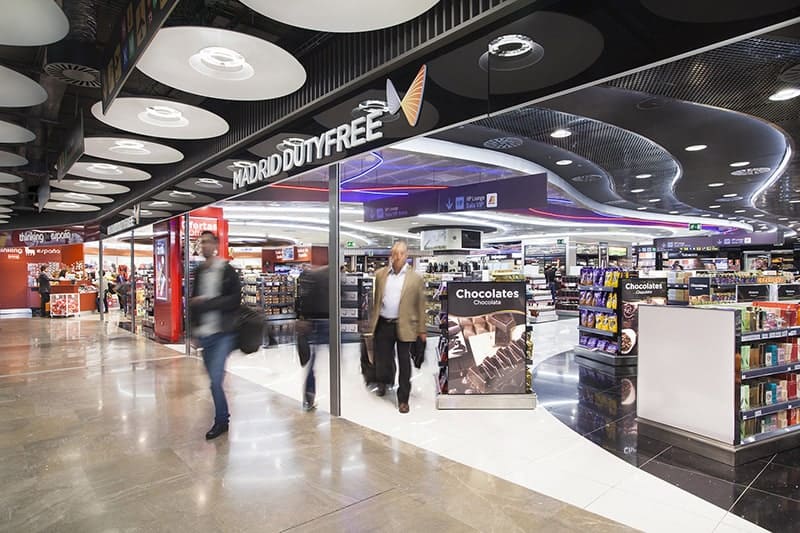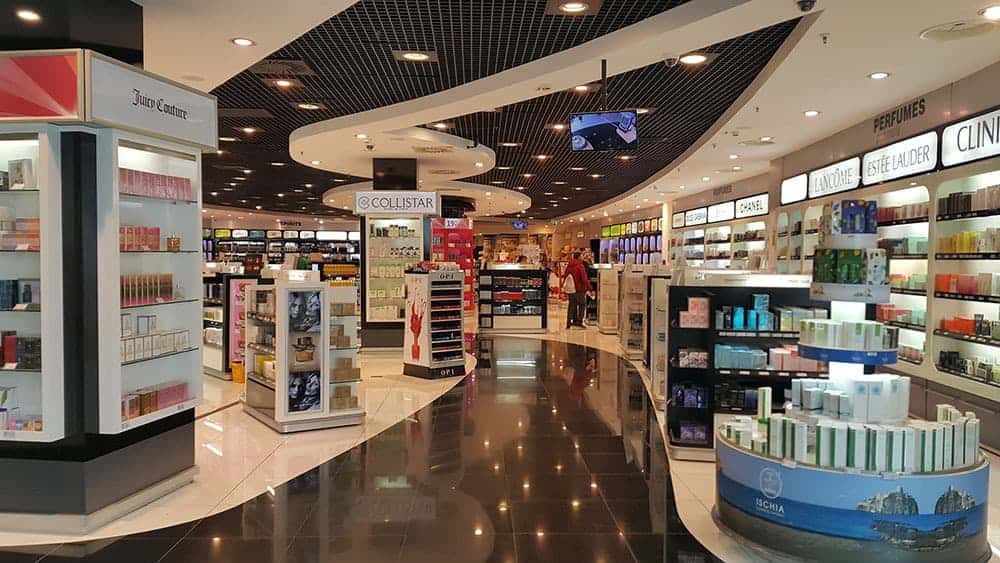In a world in which we are increasingly moving, the retail sector has seen an opportunity to grow by and take advantage of the waits between flights, or at train stations. It is called travel retail, and during 2017 it billed 70,000 million dollars worldwide, positioning itself as one of the pillars of the tourism industry.
At Éxico, we have worked in the development of hundreds of travel retail projects around the world, and we have seen the growing, changing and potential of this field.
Travel retail & duty free
Airports, international stations, ports … These are scenarios with an above average number of passers-by. The transit of passengers in this kind of enclaves has been constantly increasing in recent years, thanks in part to low-cost tourism: companies with low-cost flights, special offers, etc. For retail, this has been an important opportunity to exhibit, attract consumers, and even encourage impulse purchases.
This is travel retail: tax-free commerce oriented to tourism. Travel retail is also closely linked to duty free, the exemption of taxes in international spaces, by which the consumer must prove that he is indeed traveling to benefit from it.
A 70,000 million per year industry that continues to grow
According to the Duty Free World Council, travel retail had a turnover of 68.6 billion dollars in 2017. Fragrances and cosmetics lead the consumption of tourists worldwide, accounting for 36% of the billing, followed by alcoholic beverages sales (17 %), the fashion industry (14%) and tobacco (11%).
In terms of locations, 56% of these sales took place in retail stores located in airports. The rest of the sales took place within the airlines, onboard; in cruises and ferries in international waters, in some stores of the most touristic cities and in free economic zones (FEZ), where there are some tax benefits.
The global turnover of travel retail has not stopped growing since the industry began. In just ten years, tourist spending in duty free territory has more than doubled: in 2007, it reached 37,700 million dollars, the highest figure until then. Five years later, in 2012, billing reached 55,800 million dollars, in an exponential growth curve.
Despite of this, the industry also suffers from world events of great impact. Just as the attacks of 9/11 in 2001 or the global crisis of 2008 affected tourism, they also had an impact on travel retail, with slight variations in the sector’s turnover.
New challenges
If the tourism and the hotel industry have started to digitize their processes and increase the personalization of their services, the travel retail industry is not staying behind. Adapting to new technologies is one of the challenges that the sector is facing at the moment; a sector that wants to keep its numbers and its customers. The tourist of today is a customer with access to information right at his or her fingertips, a social media user, a traveler who seeks unique experiences.

The adaptation to digitalization will favour faster and more convenient payment processes for the client.
Immersed as we are in the era of new technologies, travel retail industry will have to go through a transformation, in search of innovating their processes and getting closer to today’s digitized consumer.
Changes in the tourism industry bring, in turn, new opportunities, especially with the increase of Asian tourists who seek in commerce an essential part of their travel experience. While the frontiers between tourism, commerce and leisure are widening and blurring, at Éxico we are prepared to continue being leaders in a growing and transforming industry.










